
Diseases
Macular DegenerationDiseases of the macula reduce central detailed vision and are the leading causes of severe vision loss in adults sixty years and older. Peripheral vision is generally retained and does not effect traveling. | ||
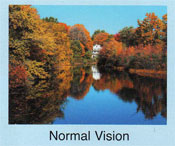 |
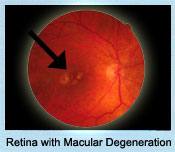 |
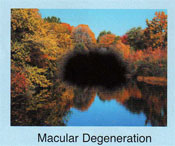 |
Approaches to Maximize Remaining Vision | ||
 |
Telescopes can be used to enlarge distant objects for improved acuity when watching TV and seeing signs when traveling. |
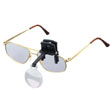 |
Spectacle Magnifiers for reading and near point tasks are commonly prescribed. Prism reading glasses allow the eyes to work together while the hands remain free. Bifocal microscopes may be needed for higher levels of magnification. |
 |
Video Magnifiers restore reading independence. |
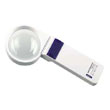 |
Hand and Stand Magnifiers with LED lighting are used for reading newsprint, mail and store labels. Low to high powers may be needed depending on the severity of vision loss. |
 |
Glare Control with Corning CPF lenses are needed to improve the contrast or outline of objects when outdoors or shopping in bright areas. |
 |
Lighting is a factor in improving acuity, contrast and reading speed. A bright light positioned below eye level and close to the reading material may be necessary. Magnification is more effective when combined with good illumination. |
 |
Accessories such as large lined paper, black felt pens, large print checks, writing guides and marking tabs for appliances can make tasks easier. |
 |
Glaucoma and Retinitis Pigmentation (RP)Glaucoma is a disease of the optic nerve caused by high eye pressure. RP is characterized by degeneration of rods and cones of the retina. Both can cause loss of peripheral vision and some loss to central detailed vision. | ||
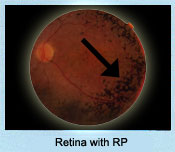 |
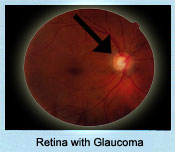 |
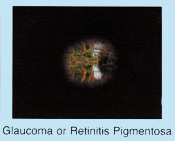 |
Approaches to Maximize Remaining Vision | ||
Prism Reading Glasses in low powers are often prescribed which allow hands to be free. |
Hand and Stand Magnifiers with LED lights in low to moderate powers for reading small print such as phone numbers and medicine labels. |
Glare Control with Corning CPF glasses to reduce glare and improve contrast will be helpful. RP patients favor CPF Amber and Red colors which reduce UV and blue light to prevent rods from becoming bleached out. This helps the patient to adapt to lighting changes and enhances peripheral vision. |
Directional Lighting and contrast enhancement devices for reading mail and writing checks. |
Diabetic RetinopathyDiabetic retinopathy is the result of damage to tiny blood vessels that nourish the retina. They leak blood that causes swelling of the retinal tissue. Symptoms include blurred vision and seeing spots or floaters. | ||
 |
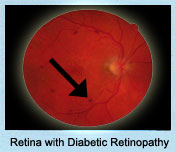 |
 |
Approaches to Maximize Remaining Vision | ||
| Refraction is necessary to determine if acuity can be improved. A change in the shape of the lens inside the eye will causes eyeglass prescriptions to change in power. |
Prism Reading Glasses with low to moderate magnification power allows the eyes to work together with hands free. |
Hi Add Bifocals or microscopes in higher power will help seeing medicine bottles and insulin syringes. |
Hand and Stand Magnifiers in low to moderate powers for reading. |
Glare Control with Corning CPF lenses to improve contrast, reduce glare and enhance peripheral vision especially after laser treatment. |
Ott Lamps for near point tasks. Average to moderate illumination. |
Multiple low vision aids best suite the diabetic patient whose vision can change throughout the course of the disease. |
CataractsA cataract is a cloudiness of the normally clear lens in the eye. The size and density of the lens opacity determines the degree of symptoms which include blurred vision, poor contrast, glare and difficulty reading. | ||
 |
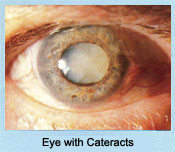 |
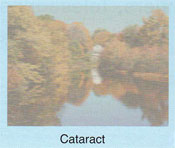 |
Approaches to Maximize Remaining Vision | ||
| Refraction is always performed to detect changes in refractive error caused by changes in the curvature of the lens inside the eye. Ordinary glasses may dramatically improve far and near vision. |
Magnifiers in low powers enlarge small print such as phone numbers or medicine labels. |
Glare Control with Corning CPF filters, polarized and gray tinted lenses are needed. Cataracts cause light rays to scatter as they enter the eye, resulting in uncomfortable glare and blurred/hazy vision. |
Directional Lighting should be positioned below eye level and brought close to the page and in front of the face. This will improve contrast and reduce glare when reading. |
